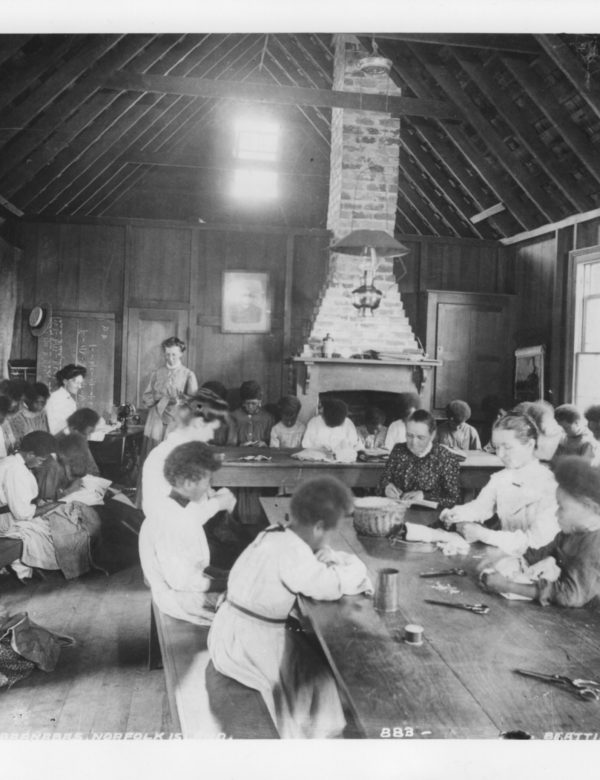
“Unpretending labours”: Julia Farr and the Melanesian Mission:
Paper by Janet Crawford presented at the First Biennial TransTasman Conference
ANZ Missionaries, At Home and Abroad 2004
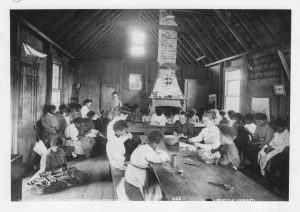
Janet Crawford has documented the ministry of Adelaide’s Julia Farr in the Solomons Islands.
According to a nineteenth-century clergyman “the unpretending labours of a female missionary are not of a nature to swell the historic page”.1 Julia Farr’s labours in the Melanesian Mission were unpretending and they have certainly not “swelled the historic page”. She is not mentioned in God’s Gentlemen, David Hilliard’s history of the mission,2 excellent in all respects except its emphasis on “gentlemen” and consequent neglect of women’s contribution. In several earlier histories she receives at most a brief mention. This is not surprising because European women and Melanesian “girls”—a term applied to Melanesian females of all ages—were quite incidental to the major purpose of the Mission, which was to train native clergy and teachers. As it was thought desirable to have “Christian wives for our Christian lads”3 a certain number of girls, usually already betrothed to male scholars, were also trained, baptized, and married at St Barnabas, the mission centre on Norfolk Island but “women’s work” was not taken seriously until the twentieth century, when Bishop Cecil Wilson initiated the policy of placing women missionaries in the islands. In her very invisibility however Julia Farr is a representative of all the many dedicated women whose “unpretending labours” have contributed immeasurably to missions around the world. Her diaries and a few letters give many insights into her life as a single woman missionary in a smallAnglican mission in the late nineteenth century.4
Julia Coleridge Farr was born in Adelaide, South Australia, on 10 August 1864. The fifth of seven children, she was born at St Peter’s College where her father, the Rev. George Henry Farr, had been headmaster since 1854. Her parents were prominent members of both the Anglican Church and Adelaide society. After leaving St Peter’s in 1878 her father held incumbencies in several parishes, was Canon of Adelaide 1857-1896, Archdeacon of Mount Gambier and the West 1880-1896, and Vice Chancellor of the University of Adelaide 1887-1893. Julia’s mother, Julia Warren Farr, née Ord, was the leader of a group of Anglican women who set up an Orphan Home for Destitute Girls in 1860 and was also responsible for founding a Home for Incurables in 1878.5
George Farr, who lost his father as a young boy, developed a close relationship with his guardian, Sir John Patteson, who was his father’s cousin. He was also the father of John Coleridge Patteson, missionary Bishop of Melanesia from 1861 until his murder on the island of Nukapu in September 1871. In 1863 Bishop Patteson paid his first visit to the Farrs in Adelaide, returning in 1866 when Julia, his goddaughter and namesake, was a baby. A St Peter’s Chapel Association was formed to assist the Melanesian Mission and later became the Adelaide branch of the St Barnabas Association, supported by a number of parishes and individuals and giving valuable aid to the Mission. Thus although little is known about Julia’s early life there can be no doubt that she grew up with an awareness of the Melanesian Mission. This was stimulated in 1878 when Bishop John Selwyn, Patteson’s successor, stayed with the Farrs. Subsequently he wrote occasionally to the young Julia Farr. Possibly she had expressed an interest in working for the Mission or perhaps he had her in mind as a future helper.6 In any case while Julia was visiting England with her parents in 1882 she attended a meeting of the Melanesian Mission committee at the invitation of Miss Fanny Patteson, sister of the late bishop, with whom she continued to correspond. After her return to Adelaide Julia, by then in her twenties, helped with parish work in her father’s parish of St Luke’s.
In 1891 Bishop Selwyn, crippled by malarial sciatica, resigned from the Mission and for the next three years the Acting-Head was the Rev. John Palmer. In 1892 Julia Farr visited St Barnabas, Norfolk Island, presumably at Palmer’s invitation.7 She arrived at the beginning of April and stayed with Alice Comins, wife of the Rev. Richard Comins, until December. The staff of the mission at this time was very small. In addition to Palmer and Comins, both of whom were married, there were six single men, two of whom were away while Julia was there. In August the Rev. Charles Browning and his wife Maud arrived from England. In addition to these missionary wives there was also Mrs. Elizabeth Colenso from New Zealand. She had joined the Mission in 1876 at the invitation of Bishop John Selwyn. She was then 57 years old and had long been separated from her husband, former Church Missionary Society missionary William Colenso. Like the missionary wives she had a house and was responsible for a group of girls, and also supervised the making and mending of clothes which was a very large part of the “women’s work”. By the 1890s she was increasingly crippled by rheumatism and in 1892 had living with her as a helper Miss Kate Lodge, a young woman from Auckland. None of these women are included on the published list of staff for 1892 although Julia Farr named them all as staff members. Among the Melanesians there were 127 male scholars, 39 females, and 8 children (belonging to the few married couples.)
The basic organization and method of the mission was as it had been in Patteson’s day and as it continued till the 1900s. Each European missionary had special responsibility for twenty to thirty boys from one particular island group. On Norfolk Island these boys lived with him in a “house” in a system akin to that in English public schools, each “house” having one room for the missionary and a larger one for the boys. During the summer he would teach them, at the same time learning their language, and in the cooler season the more proficient would return with him to the islands on the mission ship, the Southern Cross. Often they would be married before they left. Having returned home the boys would be expected to start a village school and the missionary would stay for several months, visiting “his” islands, evangelizing, baptizing and teaching. During these months the majority of the Melanesian scholars remained at St Barnabas with a much-reduced staff.
At St Barnabas the boys’ houses, the chapel, dining hall and printery were built around a quadrangle and the whole was known as the “vanua”. Although they went to the chapel and dining hall women did not enter the vanua which was masculine territory. Married missionaries with their wives and any children lived in houses outside the vanua. These houses had a room where about ten Melanesian girls would live, sleeping on mats, under the supervision of the missionary’s wife and taught by the European women. Melanesians who were married lived in little cottages in an area known as “Under the Pines”. Strict segregation of the sexes was the rule and girls were always chaperoned, by either a married Melanesian woman or one of the European women. Most meals were taken in the dining hall, where Melanesian women and girls sat at a separate table.
The usual period of training for boys was six to eight years but most girls had only three or four years. The general pattern of their training remained much the same until St Barnabas closed in 1920. They learned personal cleanliness, housework, simple cooking, and mending and making clothes. They were given an elementary education: reading, writing, a little arithmetic and a little English, a knowledge of the Bible, the Catechism, and the Book of Common Prayer. The primary aim of this training was character formation:’To form their characters, to draw them up and on, to put a high ideal before them, and to show them how to strive to reach it: to make Christian women take the place of heathen slaves.’8
During her nine months at St Barnabas Julia took an active part in the life of the small community, part visitor and part helper. She helped Mrs. Comins look after the ten girls who lived in her house, gave lessons to some of the young Palmer children, took classes in arithmetic and scripture for some of the boys, taught writing to some of the girls, helped with the mending and sewing, occasionally took Sunday School and Bible classes in “town,” i.e. with the Norfolk Islanders, and cared for two young Melanesian children, Carrie and George. She began learning Mota, the lingua franca of the Mission. She looked after Alice Comins who was often unwell, did baking, made marmalade, gardened, arranged flowers in the chapel, wrote letters, and went to chapel services. She visited and socialized with a number of the “Norfolkers”, played tennis, went riding, driving, sketching, on picnics. At Easter she was present at the baptisms of a number of Melanesians and was godmother to one. In July she described a wedding party when three couples were married. Two Melanesians died and she attended their funerals. In August Bishop Montgomery from Tasmania came on an episcopal visit during which he confirmed ten boys and three girls and ordained a Melanesian deacon. Almost immediately after this Julia experienced for the first time the excitement and sadness of the Southern Cross’s departure for the islands. All in all she gained a very good introduction to the work of the Mission and to life at St Barnabas.
It is clear that Julia wanted to join the Mission, although her outburst a few weeks her arrival was unusually emotional.
Service tonight seemed very beautiful…Oh how I longed to belong to them to give my life to this work.
As I stood at the end & looked over the dusky rows
one seemed to forget everything else in ones intense yearning for these dark
boys & girls. Their voices when they sing seem to touch one’s heart with a
pathetic longing like souls trying to find light, striving for faith. Oh God thou
knowest my heart and my fitness only give me patience to do thy will and to
work wherever Thou callest me but bless oh bless this Mission & all concerned
with it & if it should please Thee to call me to work here at any time oh God I
feel for this cause I could forget my father and my father’s house & my own
people and cleave to it.9
She was not however uncritical and later the same week noted that:
One feels in the Mission just now there are many regrets so many have gone&
none as yet filled up their places…In fact they are like a wall once well built
cemented but out of which some of the most important stones have been
bodily removed so that every stone in this place sits loose & the cement is in
many places gone. I think the ladies especially must cement together again.
Mrs. Palmer is a saint but not a woman of the world and does not understand
guiding the little social craft on its devious way. These are the little flaws in
this work.10
Farr was particularly interested in the question of “women’s work” and reported a long conversation with Arthur Brittain, who had been twelve years with the Mission. She asked him if he saw any possibility of the Mission being extended to women’s as well as the boys nor as well as they ought as teachers in the islands. He did not consider the ladies as missionaries but as wives whose first duty was to their homes. He hoped one day to see women’s work organized along similar lines to that of the boys: a large girl’s house with several ladies living among the girls and training them. Farr agreed that the system was flawed but saw it as partly the result of lack of sympathy between the married ladies and the single clergy in the “Vanua”.
It is a pity as I believe the most perfect result would come from the present
home system improved; but this feeling of the single clergy pulling a different
way leads to many difficulties and heartaches; the fault has a great deal too, on
the ladies side—this overcrowding of houses & letting their lives lose their
simplicity & severity; multiplying of household cares and want of sympathy
with the “Vanua” set all has to bear the blame.11
Nearly six months later she wrote:
Altogether my thoughts have been running on the Mission & the possibility or
probability of my ever joining it—sometimes I feel I must, at others that I can’t
& so it goes on but anyway I am learning a great deal about the life and requirements here & I feel sure the Mission is entering a new era, it seems as if
the way were being prepared for great changes & that if the new Bp is only the
right sort of man he may do great things.12
Farr’s visit ended on a note of sadness. Mary Palmer’s health was poor and she had spent part of the year in New Zealand. On her return in August she appeared well but soon after her husband sailed on the island voyage with Bishop Montgomery she became seriously ill. She died on 16 October. Farr left Norfolk Island in December.
Early the next year John Palmer wrote to Miss Farr about the possibility of a vacancy.13 During 1892 Kate Lodge had become engaged to the Rev. James Ozanne, a missionary from England. He left at the end of the year and she left in mid-1893 to marry him. This created the vacancy for Julia Farr who did not however arrive at St ……. training at the Salvation Army Homes and the Adelaide Children’s Hospital, in the knowledge that it would help her in her future work. She did some further nursing training at Auckland Hospital during a long wait for a ship to Norfolk Island.14
By the time Julia Farr joined the Mission staff she was well-qualified to be a missionary and it is clear that this is how she understood herself. She was a devout evangelical Christian with nursing and parish experience and had first-hand knowledge of life at the Mission. She had one disadvantage or handicap: she had a hearing loss. It is not clear how bad this was. Mrs. Comins wrote to Mrs. Farr during Julia’s visit in 1892 “though her trial is more or less apparent as you said it would be,her unfailing brightness and quickness keep her always up to the mark, and often one is scarcely conscious of it at all”.15 From time to time Farr commented in her diary that she was unable to hear a sermon or missed part of a conversation in the dining hall.16
Once at St Barnabas Farr moved into the room formerly occupied by Kate Lodge at Mrs. Colenso’s house. Mrs. Comins was now “head lady”, a position for which Farr thought she was not very fitted as her interests centred too much on her own home and work. She also noted the utter want of sympathy between John Palmer and the more junior members of the staff, and a tendency to split into two parties—the “old hands” and the “young men”, who inclined to “High Churchism”. In her opinion everything would depend on the new bishop, who would need the wisdom of Solomon!17
Two months later a new era began with the arrival of Bishop Cecil Wilson, an Englishman who, having been consecrated in Auckland, was installed at St Barnabas on St Peter’s Day, 29 June. Wilson was young (34), unmarried, and unburdened by past associations with the Mission and its founders. He was, “in contrast with the strong and assertive personalities among his staff, a gentle, unassuming man, constantly homesick, often to be accused of vacillation and excessive caution”. When he arrived “he entered upon the headship of a faction-ridden, backward-looking mission still dominated by the memory of its near-legendary founders, thinly spread over 2,800 islands, with a small and diminishing circle of faithful supporters”.18
One of the first things Wilson did was to recruit more staff. The number of male missionaries rose from 8 in 1894 to 14 in 1899. In 1895 women were included for the first time on the staff list. They were: Mrs. Comins, Mrs. Colenso, Mrs. Browning, Miss Farr and Miss Rossiter.18 There were other women who were not officially members of the staff. Miss Bessy Palmer, John Palmer’s niece, acted as his housekeeper until she married missionary Thomas Cullwick in 1896. Miss Anne Firmstone came in 1894 and lived with her sister Mrs. Browning before officially joining the staff in 1896. Early in 1899 she married missionary William Ferrall (or O’Ferrall). In 1895-6 a Miss Lewis paid a long visit with a view to joining the staff— which she did not do. In 1896 Sister Kate Ivens, a deaconess, came for six months and Miss Lily Williams, MA, joined the staff and stayed three years. Edith and Christine Simcox, granddaughters of Mrs. Colenso, took it in turns to stay with the crippled old lady until she left at the end of 1898. Early in 1899 the Bishop married Alice Julius, daughter of Bishop Julius of Christchurch. The same year the Brownings left on account of his health. From time to time there were visitors, male and female, but the community remained small.
During her six years at St Barnabas Julia’s work fell into three main categories.
First, she taught Melanesians in the “sul” or school. Each year she taught girls and boys (in separate classes) reading, writing, arithmetic, English and singing. She also frequently filled in for other women if they were unwell or away. She assisted with supervision of the Melanesian girls and took particular responsibility for the married women. Secondly, Farr participated in the sewing that was a large part of the “women’s work”. Each year when the Southern Cross arrived back from the islands all the new scholars had to be clothed. The girls’ clothes were usually provided by friends of the Mission but the boys’ clothes were made at St Barnabas. Missionary women and Melanesian girls together operated what was virtually a “clothing factory” where they annually made up to 1600 garments.20 Sewing took up to three hours a day and one day a week was set aside for mending.
Teaching and sewing were secondary to Julia’s main work of nursing and asshe was the only trained nurse there was plenty for her to do. When necessary she could call on help from Dr Metcalfe, government appointed doctor to the island. Dr Henry Welchman, a missionary who was a qualified doctor, was at St Barnabas when not in the islands, as was Dr John Williams who was on the staff 1895-1897. Most cases however she handled on her own.
In August 1894 Farr listed her recent cases, which were typical of her work.
In addition to acting as midwife, dressing sores and dealing with boils, cuts and other injuries, Farr frequently had one or more cases that required nursing. She cared for some female patients in a little room at Mrs. Colenso’s or went to them in the “girls’ room” at the house where they lived. After a few months she was asked by Dr Welchman to nurse a boy at the Bishop’s house in the vanua, “an unheard of innovation”22 that became routine practice. Then it was decided to build a large separate sewing room with a “nurses room” where Farr could attend to minor injuries and dress sores. Mrs. Farr and Julia’s friends in Adelaide raised most of the money for the new building which was opened in February 1895 and quickly became known as “Miss Farr’s house”. It was light, bright, and airy, with a verandah, a fireplace and several rooms, including a small kitchen for sick cooking (mostly arrowroot).
At times epidemics swept through the whole community. Meningitis, pleurisy, consumption, influenza, fits and fevers were all likely to be fatal and in spite of her devoted care a number of Farr’s patients died. She wrote detailed and harrowing accounts of some of the deaths that obviously moved her greatly, especially when they were children. She was particularly concerned that they should, if possible, be baptized before death. After the agonizing death of one little boy of nine or ten she wrote:
Leatamata laid to rest at 9 a.m. –a quiet, peaceful service. I laid a cross of lilies
& the palm I had saved from his baptism upon his coffin & there were two
pretty white wreaths…It was all so quiet & solemn & we felt such a sense of
peace knowing “the strife was over—the battle done” at last “and no sigh of
anguish sore heaves that little bosom more”… I do miss my little loving patient
very very much.23
The normal working day at St Barnabas was from 6am to 3pm with a 3 hour break followed by work from 6 to 10pm. Farr however was often called out at night, and spent hours watching the seriously ill. She was frequently short of sleep and when busy often missed meals. It is no wonder that her diary often records that she is tired, wearied, and worn out. At times she suffered from severe headaches. Her teeth gave her so much trouble that she had most of them extracted. She had neuralgic pains in her back.
Although Farr’s work involved teaching, sewing, nursing, and countless other small tasks, her deep interest was in women’s work with women. Already on his visit in 1892 Bishop Montgomery had identified the need for white women to go to the islands.
At present a white woman’s face is hardly known in our region. But the day
must come soon when women’s mission to women in the name of God must
find a place in Melanesia, and the women of Australasia will not be slow to
answer the summons…. A woman with medical knowledge, and filled with a
love for her black sisters, could go to the Solomon Islands as an angel of
mercy.24
Farr may well have hoped that she would be this “angel of mercy”. Certainly Bishop Wilson supported the idea of sending women to the islands. Soon after his arrival Julia wrote to her parents:
There is a strong and ever growing idea here that before long we must send
down women; that the women are the weak part and can only be got at by
English women going in and out among them and showing them how women
should live in their own homes. This will not come to anything for some years
but I believe it will end in our going down, and their is no reason we should
not except fever and ague and a woman will take more care of herself than a
man as a rule—but don’t take alarm at this as it is only like the first sign of it
yet may never be.25
Farr thought there were many openings for women’s work but the women had been very unenterprising. Those “who have had the time have been too stereotyped…oh how I wish I were a man & could go & do the real work in the Islands—it is so hard to be a woman sometimes”.26
Change was in the air as Wilson developed his plans and by November it was settled that a new station would be built at Siota in the Solomon Islands, with Dr. Welchman in charge. He hoped to open a small hospital. With regard to “women’s work” Farr wrote:
I fancy they will bring in more women & that they will alter altogether the
system of training girls here & the women’s work—it will end in women going
to the islands too & before long. …For myself I expect before long I shall be
living in the “women’s work house”—already it is often called Miss Farr’s
house and a room for my sick work is being built there—I feel certain they will
add on living rooms for one or two ladies …probably myself and a new lady….I
have no selfish fears for myself—everyone is so good & I believe I am liked & one.27
Although there are many diary entries like the above in which Farr refers to being happy and glad in her work there are more in which she writes of missing home and family, of loneliness, disappointment and depression. Some of this seems to have been the result of tensions and dissensions in the community. Sometimes she was able to take these lightly:
We often grumble & abuse each other & of course we know each others faults
by heart but there is lots of love too & after all we are very good friends & we
let out our pent up love on the Melanesians.28
A month later she was less cheerful.
I have been low-spirited and downhearted…Many things are different in a
place like this & make one sad. Things have never been internally what they
ought to have been and I can quite see jealousy, bitterness, quarrels & mistrust
have become ingrained & no-one seems to think them dreadful now.29
Although Farr generally got on well with the other single women it seems her relationships with “the brethren” were more difficult.
I cannot bring myself to cringe to them to try to get round them& wheedle out
their confidences & that is what they seem to like. I never find I have anything
to say to them I could not say on the housetop & I hate the undertone
conversations carried on with one lady or another at table… One thing I feel
sure of is that our missionaries deteriorate in some ways inevitably in their
dealings with women. They get so used to buying and selling them, ordering
them here & there & treating them as the great men’s chattels, they
unconsciously get to regard us in the same way & it is incomprehensible to
them that a woman should differ from a man or hold opinions of her own.30
1895 was a difficult year for Farr. It began with an epidemic of influenza in January. School had to be stopped and for some weeks all was confusion but there were no deaths. In the second week of Lent there was another bout of illness and two Melanesians died. The Bishop decided to try the experiment of having a woman work among Melanesian women in the islands and Helen Rossiter agreed to marry Dr. Welchman and to live with him at the new station at Siota. Farr was anxious for the scheme to succeed but she may well have been disappointed that she was not to have the opportunity to go to the islands. Although “Miss Farr’s house” had been opened she was still living at Mrs. Colenso’s and her work was unchanged. Her parents with a grandson and her unmarried sister Gertrude came on long visit from June to November. For most of that time her father and sister were ill and she was very anxious about them. At the same time “things in the Mission were very trying and upsetting. It must be so with a young and inexperienced Bishop”.31
Farr wrote of her life as “a sore battle” full of temptations and trials, of weeks of ceaseless internal struggle, “of the besetting doubts as to one’s work, one’s life, and as to whether the work is worth the awful price of all that is nearest and dearest”. She prayed that God would strengthen her faith and give her light.32
Things did not improve in 1896. The year began with a “synod” or meeting of staff at which it seems that although the “women’s question” was discussed the women staff were not present.33 Farr reported that the men had recommended to the Bishop:
That they are of the opinion that it is desirable to make a change in the system
with regard to the girls. That the girls be placed under one responsible head
assisted by the married ladies, existing material to be utilized as far as possible
(sic).
Farr may reasonably have hoped to be in charge if this change occurred but “the Bishop has changed his front & disclaims any wish for change & I think now means to let it slide. He has been talked over by the Palmers. Miss Palmer at present rules the Mission through the Bishop!”34 As the year went on Farr was depressed and tired, worn out with nursing, and anxious about Gertrude who had stayed on with the Metcalfes after her parents left and was very unwell. She was upset by various incidents, especially a violent fight among the boys, “the worst outbreak of passion ever known on the Mission”.35 In March she wrote she had experienced a good many “downs” but “all this buffeting and humbling must be good for one”. She was however “feeling personally the very essence of failure –as if I were always doing & saying the wrong thing”.36 A few days later she wrote an anguished entry expressing her loneliness.
My heart gets sick with longing for the old home faces and voices & oh how I
long for love. Here one gives it out but less & less gets given one except from
the sul [school] & that is one’s great reward but it cannot quite take the place
of the understanding, spontaneous love of ones own kind. To be loved just
because one is oneself to be dear to anyone for ones own sake. Oh, only those
who have tried it and been down the lonesome road know what it is to be
without all this; the common daily bread of home. The wives here still get their
husbands’ love. The Mothers and Fathers their children’s, but the rest of us
learn to do without it or to seek it where the rust and moth doth not corrupt and
where there is no changing or shadow of turning. I think on the whole we are
very brave most of us.37
She also poured out her feelings in a letter to her sister Nell that seems to be largely a reaction to her disappointment about the Bishop’s failure to develop “women’s work” at St Barnabas.
I feel that it due to myself and my parents that I put an end to this. That if
jealousy and narrow mindedness are to interfere with my work and blacken
my character and the Bishop has not strength enough to prevent the former or
[stop] the latter…however kind and sympathetic he may be privately it
behoves me to take myself elsewhere. I no longer feel hot bodily and
indignant. I have had over two months now to think things over and this
morning I have written a clear letter to the Bishop…laying my position before
him. … if he does not see his way to mend matters I’ll look for work
elsewhere…The Bishop is good but so weak. He agrees with me and will even
throw some fresh responsibility on me, open some new door of work, the
innovation rouses jealousy, suspicion and alarm and the Bishop comes in at
once so leaves one to bear the onus and be driven ignominiously from the
field… however kind in intention the Bishop may be one cannot rely on him at
all.38
She refers to her difficulties with the married women.
It is a great disappointment Nell dear. I do not feel I have failed, but the
Mission has failed me. Miss Lodge was almost a servant in her position here. I
could not rest in that position—birth, parentage, brains and pride made it
impossible and in consequence have roused the animosity and opposition of
the married women as a whole. (Mrs Comins personally has not opposed me
but her horizon is limited and she is very timid and gets me the credit of being
led by me which does neither of us any good). Miss Ivens being a deaconess
will have a far better chance as the young priests will back her up for the sake
of the exaltation of all church orders. It is a pitiful state of affairs as the Bishop
himself said St Paul knew something about women when he told Timothy not
to let the wives be ‘devilish’. (Keep this to yourself.) The wives used to rank by
their husbands’ positions now they do not I am senior to the new ones and
they cannot forgive this. You may say the wives are a small party but with their
husbands and friends they are a large one and likely to win. The struggle is
undignified. My life and usefulness are wasted while it goes on and it seems to
me it is best to give it up.39
Old Archdeacon Palmer had an ungovernable temper and strong prejudices and seemed to despise his co-workers. Richard Comins was “a saint” but retiring, timid and tactless. Thomas Cullwick was coarse, rough, violent and drank too much. The younger men all seemed “puffed up with spiritual pride” and she thought “always bossing an inferior race makes them arrogant”.40
The following morning Farr decided not to send the Bishop her letter of resignation as he had enough worries and “to run away now would be rather like a rat leaving a sinking ship—one feels if the ship were not in Higher Hands it would have to sink; as it is one feels some rescue will be found, but never was an institution in worse straits”.41
A couple of months later Farr went on leave for over a year. A letter from Mrs. Comins suggests that she used this time to reflect on her future.
By that day [her birthday in August] it may be that your course will be clear
before you; but if you still are “walking in darkness and have no light”,
you must stay yourself upon your God until He makes your way plain, through His
providence, in the circumstances of your daily life.42
During Farr’s absence Helen Rossiter married Dr Welchman and went with him to Siota but unfortunately died there two months after her arrival.43 Her death was a real set back to the attempt to send women to the islands, a step which Wilson did not take again until 1905, after Farr had left the Mission.
On her return to St Barnabas in October 1897 Farr seemed happier. She wrote less often in her diary and the entries are often short. Her work was satisfying: “I am very, very fond of my ‘girls’, i.e. the married women & they of me I know”. Community life was easier.
Life goes on here always in the same way. We do the same things & go on in
the old grooves but now I think it is more like it was at first & a happy holy
spirit seems ruling & uniting us all & I at any rate feel very happy & thankful in
the work. I do not feel homesick or sad too much of my heart is here; every
day here is so precious; every day opens up new work, may it even be so until
we all meet again “at the resurrection of the just & go in together to the house
of many mansions”.44
She got on well with Lily Williams, who had joined the staff during Farr’s absence.
Miss Williams is a splendid help & I like her more & more; we never fall foul of
each other & she is so bright and unselfish…I do feel happy & glad in my
work& thankful for such a fellow worker as Miss Williams; she is splendid the
more I know her the better I like her.45
After she had been back more than a year she noted that in her diary she chronicles picnics, rides etc.— mild dissipations that make a change in life—as she cannot keep “as the sunrises and sets”.
The fits of the blues, the “heimweh”, the disappointments, nasty jars and such
ilk are also left out. It is bad enough to suffer them & best not to dwell on them
& worse far to inflict them on ones friends as well as ones self. Yet don’t let
those friends imagine that this here missionary does not need their love &
Sympathy & comfort very, very much & that she is not often very lonely &
depresses & discouraged & envies those who rest in the snug sanctuary of a
home with all her heart. You need to be a woman living not in a home to
appreciate all that that word means. My sympathy now is unbounded with all
homeless women be they nurses, teachers, helps or what, & on the help &
comfort it must be when people with homes will let them feel one of
themselves just now & then & share a family meal.46
In April 1899 Bishop Wilson return brought his new bride Alice, daughter of Bishop Julius of Christchurch, to St Barnabas and once again the Mission had a “Bishopess”.47 Farr had been very critical of the wedding on grounds of its expense48 but welcomed the newcomer and liked her more as she saw more of her.
She has plenty of sense & sees things without being told them. At present she
is discovering that the men are not fond of the Bishop that it is difficult to get
them round her or much to the house & that they love to criticize & she is
holding her head high & going her own way. I like him better already & I think
he wants me to be his wife’s friend & she chats very freely to me”.49 8 April
1899
Earlier plans for a small hospital at Siota had not gone ahead, even though money had been given for it. Instead there were discussions about building it on Norfolk Island. According to Farr in May 1898, “We now all feel the need of a hospital here & picture the joy of being in charge of it” although for some unstated reason “I don’t suppose I shall ever be”.50 However in 1899 it was agreed that the money for the hospital should be transferred to Norfolk Island and Farr wrote that “it seems taken for granted that the Hospital will belong to me… the Doctor and I are talking over plans…”51
It seemed as though at last some of Farr’s hope were to be realized and indeed the hospital was built and opened in December 1900. However Sister Kate Ivens was in charge, not Farr. There is no diary available for 1900 but letters show that around the middle of the year she went back to Adelaide where her father, now in his eighties, was unwell. Almost the last entry in Farr’s diary shows a gloom once again over the Mission.
Saturday night we had a sad surprise here. Poor Mrs. Wilson’s little one came
into this world—two months too soon. But it knows nothing of this world of
ours for it never breathed. Poor Mrs. Wilson felt it very much & so did the
Bishop and it cast a gloom over us all. Mrs. Wilson went on very well for a
week but the following Saturday as very ill—but she is doing well now. None of
us have seen her since her trouble. I was with her then.52
Farr evidently hoped to return to St Barnabas and William Edgell wrote that if she did I shall claim you for work here on the ground of old and tried friendship. I am to have a weatherboard house built in N. Raga, and can offer you half. I don’t know how that would suit the proprieties but there is the offer.53
In November 1901 however Bishop Wilson accepted Farr’s resignation. Her father’s health had not improved and both her parents were distressed by the recent death of their elder daughter Nell (Eleanor Blackmore). Wilson’s letter is evidence that the staff.
I don’t know how to tell you how grieved I am that you are going to leave us.
You have been such a true and loyal friend to me…I had looked forward to you
return some day…[Alice] will miss you as much as I shall…I must accept your
resignation though when you can return we shall have a place for you.54
Farr did not lose all touch with the Mission as for a number of years she was its Organizing Secretary in Adelaide. Archdeacon Farr died in 1904, followed by Mrs. Farr in 1914. Farr then went to Christchurch to act as housekeeper to her younger brother, Dr. Clinton Coleridge Farr, a professor at Canterbury University College. There she was active in the Christchurch Melanesian Committee. Farr returned to Adelaide five years before her death in 1951.
When Elizabeth Colenso learned in her New Zealand retirement that Farr had gone to Adelaide and might not return to St Barnabas she wrote her a letter hoping labours day after day early and late with the sick and sore”, affirming that “even if not recognized by man—it is sufficient that they are known to God”.55 I believe Julia Farr would have agreed with this evaluation of her missionary career.
END NOTES
31.Diary, 6 November 1895.
Reproduced online with the permission of Janet Crawford, 2006.
Downloaded from Project Canterbury: anglicanhistory.org
© Janet Crawford, 2004. Reproduced on the MOW Website with permission of the author. 2020.
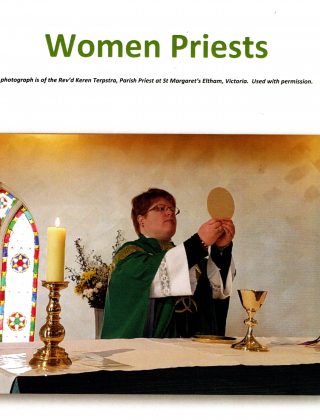
In 2022, the Rev’d Dr Lesley McLean, President of MOW, noted that, all over Australia dioceses, parishes, small groups and…
Read More
The Rev. Alison Cheek, one of the first female priests in The Episcopal Church and the first to publicly celebrate…
Read More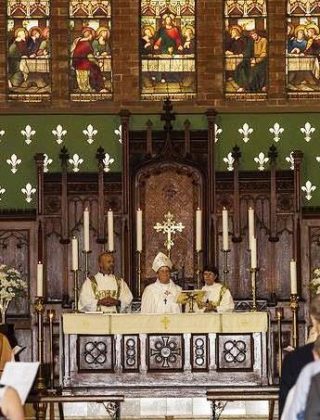
Rain welcomes new bishop at her consecration THE heavens opened up as worshippers spilled out of the Christ Church Cathedral…
Read MoreA St Peter’s Cathedral Adelaide Tour Guide presents a talk about one of its stained glass windows. This is…
Read More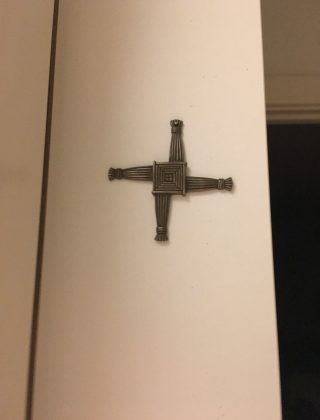
St Peter’s Cathedral Adelaide presents a talk about one of its stained glass windows. This is one of a series…
Read More
St Peter’s Cathedral Adelaide presents a talk about one of its stained glass windows. T his is one of a…
Read More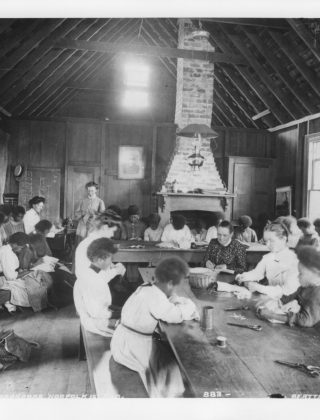
“Unpretending labours”: Julia Farr and the Melanesian Mission: Paper by Janet Crawford presented at the First Biennial TransTasman Conference ANZ Missionaries,…
Read More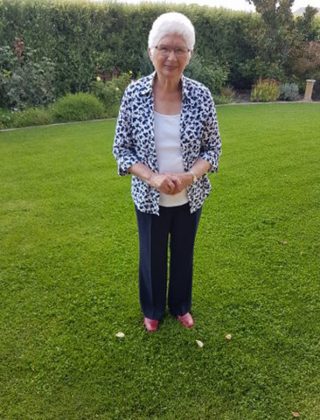
Jan retired from the MOW Board at the 2020 AGM. Here is what she wrote about her involvement in the…
Read More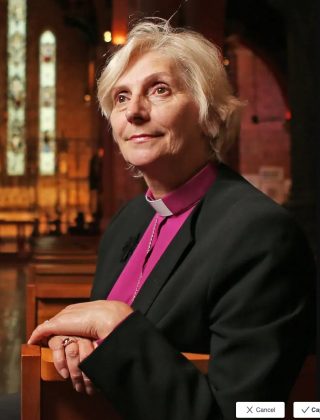
A TRAILBLAZER for three decades, Bishop Kay Goldsworthy is accustomed to “firsts” and smashing through the “stained glass ceiling”. She…
Read More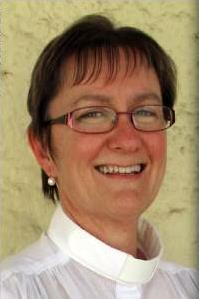
Sydney MOW hosted a public lecture by Rt Rev Genieve Blackwell, with the theme “Behold, I Make All Things New!”….
Read More